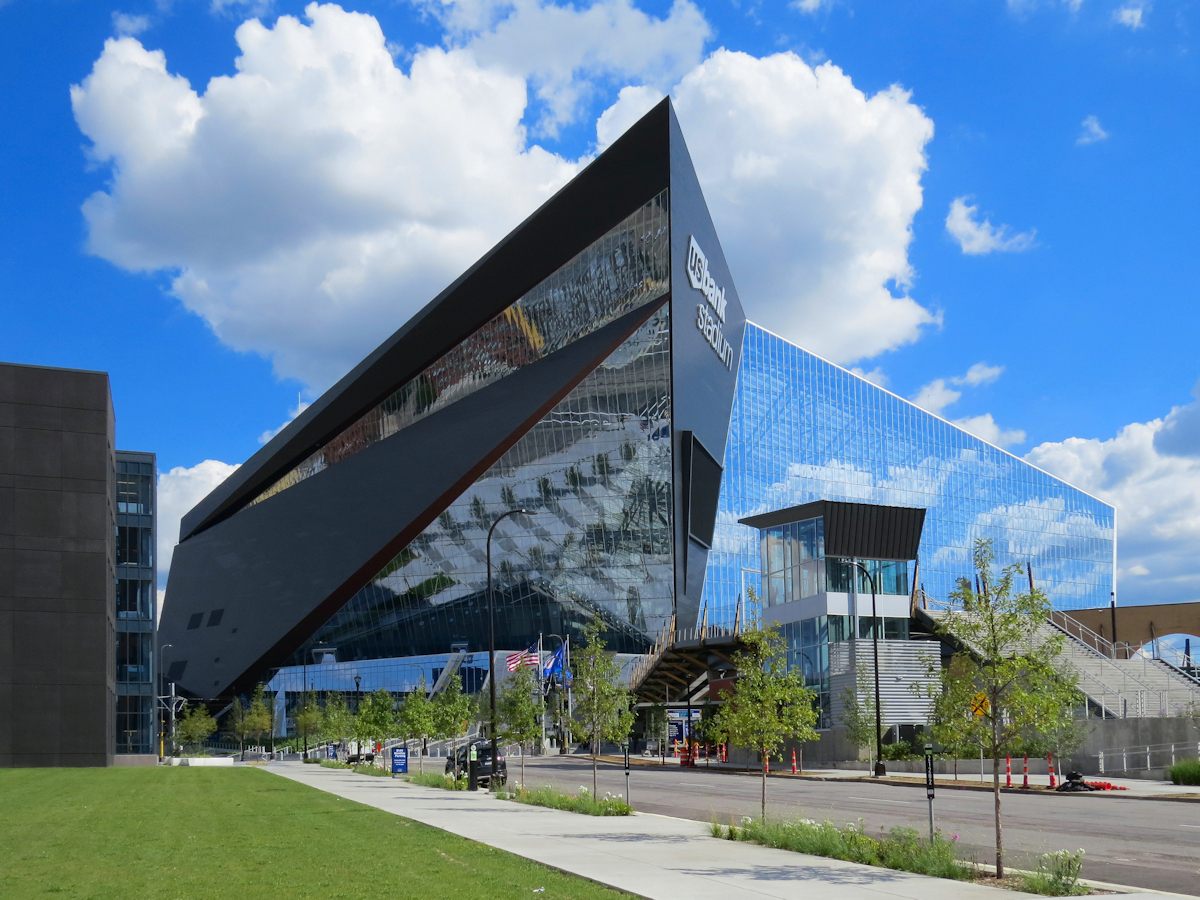Minneapolis: U.S. Bank Stadium confirmed as bird trap
source: StarTribune.com / PLOS One; author: michał
 The ultramodern stadium in Minneapolis has been proven to kill birds during migratory seasons. But while it's one of the most dangerous glazed buildings for birds, the number of fatalities isn't as big as initially feared.
The ultramodern stadium in Minneapolis has been proven to kill birds during migratory seasons. But while it's one of the most dangerous glazed buildings for birds, the number of fatalities isn't as big as initially feared.
Advertisement
Prompted by fears from conservationists, Minnesota Vikings and the Minnesota Sports Facilities Authority (MSFA) commissioned a study into how dangerous the vast glazings of U.S. Bank Stadium are to migrating birds. Because the stadium sits beside the Mississippi River’s migratory flyway, it was feared that a vast number of birds would be dying during every migratory season.
The study's results have now been published in scientific journal PLOS One. On the one hand the study proves that the stadium is one of the most deadly buildings in the city. Together with three unidentified downtown office towers it's responsible for % of all collisions and 68% of all fatalities. On the other hand, the stadium is said to have caused 111 bird deaths annually, which – while very problematic – is not catastrophic.
However, since the building received very strong public subsidy to the tune of $500 million, it is required by law to make environmental accommodations for birds. The most problematic area consists of the western glazings, seen on the below photo.
 © Jim
© Jim
Not only are the glass spans very significant here, the glass is reflective and there are green spaces in front of the stadium. When birds see trees reflected on glass, they fly into it particularly often, mistaking it for actual habitats.
The Vikings and MSFA have issued a joint statement, in which they agree to adopt recommendations of limited illumination of the stadium (also proven problematic for migrating birds). However, there is no declaration of how the glass issue would be addressed.
“As it relates to glass treatment, we need to better understand the effectiveness of the various applications and the impact such treatments would have on the stadium’s architectural integrity and aesthetics,” the statement said. They added they would keep green space recommendations in mind with “potential future landscaping projects.”
Advertisement
 StadiumDB
StadiumDB